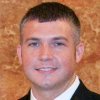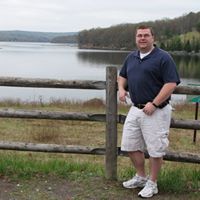Keith S Schneider
age ~44
from Union, KY
- Also known as:
-
- Keith S Sahneider
- Casey Schneider
- Kieth S Schneider
- Casey M Shannon
Keith Schneider Phones & Addresses
- Union, KY
- Cincinnati, OH
- Oxford, OH
Specialities
Buyer's Agent • Listing Agent
Name / Title
Company / Classification
Phones & Addresses
Director
ASHLEY PLACE HOMEOWNERS' ASSOCIATION, INC
781 Pointe Dr, Fort Mitchell, KY 41017
Vehicle Records
-
Keith Schneider
view source -
Address:8825 Nabida Dr, Cincinnati, OH 45247
-
VIN:JM1CR29L580308529
-
Make:MAZDA
-
Model:MAZDA5
-
Year:2008
Resumes

Computer Systems Analyst
view sourcePosition:
Computer Systems Analyst / Sr. Computer Programmer Analyst at Greater Cincinnati Water Works, Independent IT Consultant (Working Remotely) at Connections Marketing
Location:
Cincinnati Area
Industry:
Information Technology and Services
Work:
Greater Cincinnati Water Works - Greater Cincinnati Water Works since Dec 2008
Computer Systems Analyst / Sr. Computer Programmer Analyst
Connections Marketing - Chicago, Illinois since Jul 2012
Independent IT Consultant (Working Remotely)
SampleSaint (Startup) - Cincinnati, Ohio Nov 2011 - May 2012
Independent IT Consultant
Cincinnati Recreation Commission - Cincinnati, Ohio Apr 2005 - Nov 2008
Senior Computer Programmer Analyst
Network Insight - San Diego, California Jun 2007 - Jun 2008
Independent IT Consultant (Working Remotely)
Computer Systems Analyst / Sr. Computer Programmer Analyst
Connections Marketing - Chicago, Illinois since Jul 2012
Independent IT Consultant (Working Remotely)
SampleSaint (Startup) - Cincinnati, Ohio Nov 2011 - May 2012
Independent IT Consultant
Cincinnati Recreation Commission - Cincinnati, Ohio Apr 2005 - Nov 2008
Senior Computer Programmer Analyst
Network Insight - San Diego, California Jun 2007 - Jun 2008
Independent IT Consultant (Working Remotely)
Education:
University of Cincinnati 2000 - 2006
Bachelor of Science (B.S.), Information Engineering Technology
Bachelor of Science (B.S.), Information Engineering Technology

Innovative Strategic Leader; Experienced Business Developer And Fund Raiser: Outstanding Communicator And Team Builder
view sourceLocation:
Cincinnati Area
Industry:
Venture Capital & Private Equity
Classmates

Keith Schneider (Ged)
view sourceSchools:
Eagle River High School Eagle River WI 1966-1970
Community:
Stephanie Caruso, Tim Mcintosh, John Dunow, Doris Hyson, Loren Welch, Beth Dipersio

Keith Schneider
view sourceSchools:
Waterford Union High School Waterford WI 1976-1980
Community:
Ronald Wilson

Keith Schneider
view sourceSchools:
Washington High School Colton CA 1981-1985
Community:
John Zsoldos, Wm. Murray

Keith Schneider
view sourceSchools:
Rappahannock High School Warsaw VA 1986-1990
Community:
Robert Wilson, Corine Barrier, Florence Millar

Keith Schneider
view sourceSchools:
Jasper High School Jasper IN 1979-1983

Keith Schneider
view sourceSchools:
Cedar Ridge High School Old Bridge NJ 1972-1976
Community:
Jeanette Heasman, Timothy Mathieu, Eric Frommer, Linda Harrington, Annemarie Corcoran

Keith Schneider
view sourceSchools:
Kingsborough High School Brooklyn NY 1995-1999
Community:
Albert Kaufman, Anderson Walcott, Christine Lee, Neil Fal

Keith Schneider
view sourceSchools:
University School Hunting Valley OH 1992-1996
Youtube
Flickr
Plaxo

Schneider, Keith Howard
view sourceCharlotte, NCI grew up in Pittsburgh and Toledo and spent 3 years in the Army after high school before going to college at U of Toledo. After graduation I moved to DC and... I grew up in Pittsburgh and Toledo and spent 3 years in the Army after high school before going to college at U of Toledo. After graduation I moved to DC and spent seven years working for a military association and LexisNexis. I was transfered to Charlotte in 1991 where I met my wife Traci. I...

Keith Schneider
view sourceGainesville, FLAssociate Professor at University of Florida

Keith Schneider, CCIM, SIOR
view source
Keith Schneider
view sourceDallas, TX
Googleplus

Keith Schneider
Work:
School District of Cambridge - Principal (2011)
School District of Milton - Associate Principal (2008-2011)
School District of Cambridge - Business Education Teacher (1997-2008)
School District of Johnson Creek - Business Education Teacher (1994-1997)
School District of Milton - Associate Principal (2008-2011)
School District of Cambridge - Business Education Teacher (1997-2008)
School District of Johnson Creek - Business Education Teacher (1994-1997)
Education:
Viterbo University - Educational Leadership, UW-Whitewater - MS--Business Education, UW-Whitewater - BSE--Business Education
Relationship:
Married

Keith Schneider
Work:
Legg Mason, Inc.
M&T Bank
M&T Bank
Education:
UMUC

Keith Schneider
Work:
Cambridge Elementary School - Principal (2011)
Northside Intermediate School - Associate Principal (2008-2011)
Northside Intermediate School - Associate Principal (2008-2011)

Keith Schneider

Keith Schneider

Keith Schneider

Keith Schneider

Keith Schneider

Keith Schneider
view source
Darin Keith Schneider
view source
Keith Schneider
view source
Keith Schneider
view source
Keith Schneider
view source
Keith Schneider
view source
Keith Schneider
view source
Keith Schneider
view sourceNews

Kill The Messenger: How The Media Destroyed Gary Webb
view source- The big papers had been pushing the same line for years. In 1987, New York Times reporter Keith Schneider had flatly dismissed a lawsuit filed by a liberal group charging that the Contras were funding their operations with drug money. "Other investigators, including reporters from major news organiz
- Date: Oct 11, 2014
- Category: Entertainment
- Source: Google

Wonkbook: Filibuster reform dead
view source- Obama's goal of using 80 percent clean energy is fanciful, writes Keith Schneider: "Let's quickly evaluate the 80 percent electrical generation goal. To achieve 80 percent clean energy generation essentially means replacing at least 500 gigawatts of conventional coal-fired generation with cleaner alternatives. In essence, the U.S. would have to nearly completely rebuild its electrical generating infrastructure, which last year had about 940 gigawatts of electricial generating capacity. By 2035,
- Date: Jan 28, 2011
- Category: U.S.
- Source: Google
Get Report for Keith S Schneider from Union, KY, age ~44













